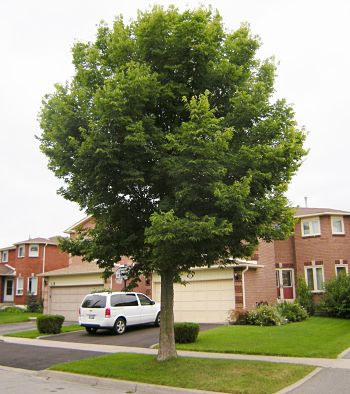Commonly known as the sugarberry or false elm, the hackberry is a member of the elm (Ulmaceae) family. The genus Celtis comes from the Latin name of the African lotus tree in reference to its sweet fruit while the specific epithet occidentalis means western or of the western hemisphere, appropriately named by Carl Linnaeus (a Swedish botanist). It is also said that the word “hack” comes from the Scottish word “hag” (meaning witch) in reference to the hagberry tree (Prunus padus), which early colonists confused with the hackberry because of the similarities between their small, cherry-like fruits and growth habits.
The hackberry was traditionally used for many medicinal and food purposes. The bark was used to regulate menstrual cycles, colds, and sore throats. The fruit was often mixed with fat and corn to produce a porridge-like substance and it was also pounded into a paste and baked in the oven.
The hackberry fruit is a sweet treat for humans and wildlife alike!
Rich in history, the hackberry is also very beneficial for wildlife; it is one of the best trees for providing food and shelter to birds and small animals. It is host to at least five different species of butterfly, including the Tawny Emperor, the Snout Butterfly, the Morning Cloak, the Question Mark, and of course, the rare Hackberry Emperor. Its fruits are attractive to many birds (especially in the winter), including cedar waxwings, woodpeckers, mockingbirds, and robins. The leaves also provide food for many caterpillars.
The uncommon Hackberry Emperor, often found on or around its food sources
Reaching an average mature height of about 40 feet and an average mature width of about 25 feet, the hackberry is an excellent medium-sized tree that is often planted to create shade and privacy on residential properties. With its dense, upright branching system and rounded, spreading crown, the hackberry’s canopy bears a striking resemblance to Einstein’s hair. Simple, ovate leaves emerge in early spring with serrated edges, unsymmetrical bases, and tapered points. The upper surface of the leaves is rough textured and darker green in colour whereas the lower surface is smoother and paler green in colour. In the fall, the leaves turn a bright yellow to yellow-green.
A mature hackberry tree- hardy and durable, this tree makes an excellent urban species.
Small light green singular female and clusters of male flowers appear in spring. Female flowers give way to round, berry-like drupes containing single seeds. These edible fruits, which have a flavour similar to dates, mature to a purple-black colour in the early fall and persist on the tree throughout the winter. Another key feature of the hackberry is its bark -- the young bark is smooth and light greyish-brown in colour and matures into a darker greyish-brown colour with corky, irregular ridges, and a warty texture.
The hackberry bark is quite unique with its corkiness being its identifying characteristic!
If you are looking to plant a hardy urban tree, the hackberry might be the right tree for you! Check out our website to set up a consultation with one of our arborists this spring!
Brenna Anstett is an ISA certified arborist and LEAF’s Field Operations Coordinator.
The Backyard Tree Planting Program is supported by the City of Toronto, the Regional Municipality of York, Toronto Hydro, the Town of Newmarket and the Town of Ajax.



